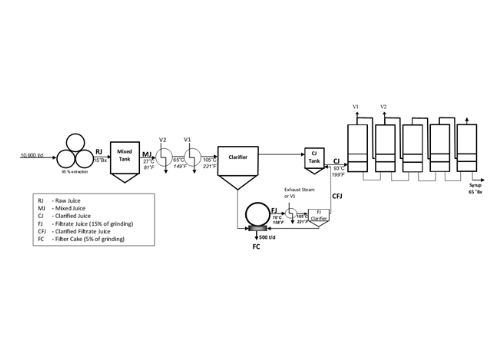Introduction:
In the sugar industry, brix is a fundamental term used to measure the sweetness of sugary solutions. It is a vital parameter that directly impacts the quality and value of sugar products. In this blog post, we will explore what brix is, how it is measured, its significance in the sugar industry, and its applications in various processes.
What is Brix?
Brix refers to the measurement of the total soluble solids (TSS) in a solution, typically expressed as a percentage. These soluble solids primarily consist of sucrose, but may also include other components such as fructose, glucose, and organic acids. Brix is used as an indicator of the concentration of dissolved solids, which directly correlates with the sweetness and quality of the solution.
Measuring Brix:
The measurement of brix is commonly performed using a refractometer. A refractometer measures the refractive index of a solution, which changes based on the concentration of dissolved solids. By shining light through the sample and measuring the angle at which it bends, the refractometer can determine the Brix value of the solution. The brix scale typically ranges from 0 to 100, with pure water having a brix value of 0.
Significance of Brix in the Sugar Industry:
Brix plays a crucial role in the sugar industry as it directly affects various processes and products. Here are a few key aspects where brix is of significant importance:
1. Sucrose Content Determination:
Brix is used to estimate the sucrose content in sugary solutions, such as sugarcane juice or molasses. By measuring the brix value, sugar manufacturers can determine the concentration of sucrose present, which is essential for calculating sugar recovery rates and ensuring product quality.
2. Extraction and Purification:
During the extraction process, brix is monitored to optimize the yield of sucrose extraction from sugarcane or sugar beet. Controlling and maintaining specific brix levels in the extracted juice or syrup helps in achieving desired sugar purity and maximizing sugar recovery.
3. Crystallization and Refining:
Brix is a critical parameter in the crystallization and refining stages of sugar production. By monitoring and adjusting the brix levels, sugar processors can control crystal formation, growth, and separation, leading to the production of high-quality, pure sugar crystals.
4. Product Quality and Shelf Life:
Brix is an essential factor in determining the sweetness, flavor, and overall quality of sugar-based products. From granulated sugar to syrups and confectioneries, the brix level directly affects taste, texture, and preservation. Maintaining appropriate brix levels ensures consistent product quality and extends shelf life.
Conclusion:
Brix is a crucial measurement in the sugar industry, serving as a key indicator of sweetness and quality. Through its measurement, sugar processors can optimize sugar extraction, crystallization, and refining processes, leading to higher sugar recovery and superior product quality. Understanding the significance of brix and its applications empowers sugar industry professionals to make informed decisions and produce exceptional sugar products that satisfy consumer demands.






